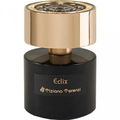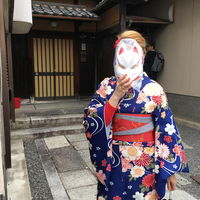
MemoryOScent
37 Reviews

MemoryOScent
Helpful Review
5
treasures from the attic
Citta di Kyoto is one of the most recent releases (2004) of a house that claims a continuous production since 1612. Anyone who is familiar with their releases knows that they are quirky, not always easy to wear but always come through as unpretentious, clear and yet sophisticated fragrances. So how is this managing with its recent releases? In one word, perfectly.
Citta di Kyoto was released to celebrate the 40 year old affiliation of Florence and Kyoto and what better way to do that than combining notes of florentine iris and japanese lotus. I must admit I am not familiar with how lotus smells but had I read the official note listing I would have been put off: “The perfume opens with vibrant, fruity and fresh top notes of jasmine and ylang-ylang, which are punctuated by the deeper hints of bergamot and orange. These are followed by base notes of Florentine iris and lotus”. No, no, no, no! It starts with a magnificent paint diluent note (admittedly this can be attributed to ylang ylang as it sometimes has a mentholated aspect)that quickly fades into the driest, palest, softest cedar. The most opulent orris butter kicks in to smooth out the rough woody surface. The overall effect is that of velvety, dusty suede. It makes me think of smelling uncooked rice. Much to my astonishment this is listed as a feminine scent which together with the official description are doing a great job at restricting this fragrance’s target group. This is dry, woody, leathery iris at its best and Dzongkha lovers please give this a try. In another perfume world Citta di Kyoto could very well pass as a masculine version of Equistrius. It wears close to the skin, feels like it sinks into the skin and radiates from there but it has an exceptional longevity even though it is an eau de cologne.
Notes from my nose: paint diluent, cedar, butter, iris, rice, incense tears
Citta di Kyoto was released to celebrate the 40 year old affiliation of Florence and Kyoto and what better way to do that than combining notes of florentine iris and japanese lotus. I must admit I am not familiar with how lotus smells but had I read the official note listing I would have been put off: “The perfume opens with vibrant, fruity and fresh top notes of jasmine and ylang-ylang, which are punctuated by the deeper hints of bergamot and orange. These are followed by base notes of Florentine iris and lotus”. No, no, no, no! It starts with a magnificent paint diluent note (admittedly this can be attributed to ylang ylang as it sometimes has a mentholated aspect)that quickly fades into the driest, palest, softest cedar. The most opulent orris butter kicks in to smooth out the rough woody surface. The overall effect is that of velvety, dusty suede. It makes me think of smelling uncooked rice. Much to my astonishment this is listed as a feminine scent which together with the official description are doing a great job at restricting this fragrance’s target group. This is dry, woody, leathery iris at its best and Dzongkha lovers please give this a try. In another perfume world Citta di Kyoto could very well pass as a masculine version of Equistrius. It wears close to the skin, feels like it sinks into the skin and radiates from there but it has an exceptional longevity even though it is an eau de cologne.
Notes from my nose: paint diluent, cedar, butter, iris, rice, incense tears




 Top Notes
Top Notes  Hawthorn
Hawthorn Jasmine
Jasmine Orange
Orange Ylang-ylang
Ylang-ylang Bergamot
Bergamot Heart Notes
Heart Notes  Florentine iris
Florentine iris Lotus
Lotus Peach
Peach Lavender
Lavender Base Notes
Base Notes  Precious woods
Precious woods









 Verbena
Verbena Aspasia0
Aspasia0 Coffeecat283
Coffeecat283 Erswan
Erswan IrisNobile
IrisNobile Sweetsmell75
Sweetsmell75 MadameLegras
MadameLegras Andrula
Andrula Delightful
Delightful Pollita
Pollita






























